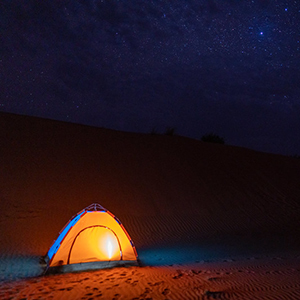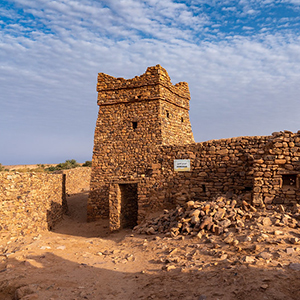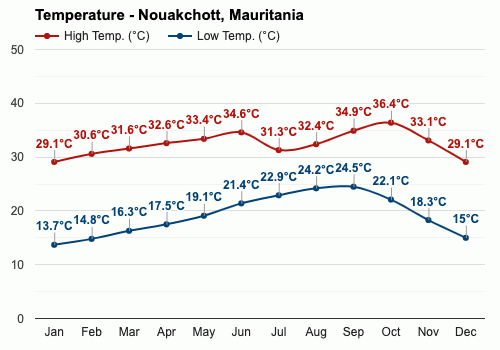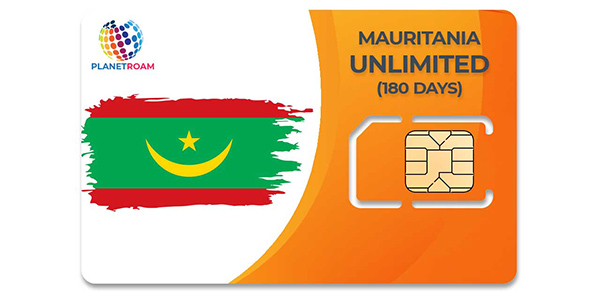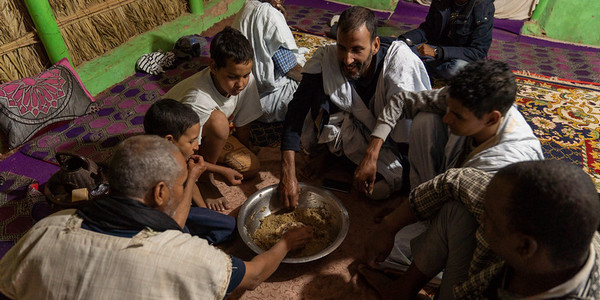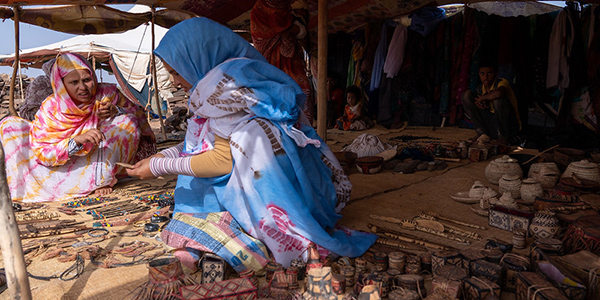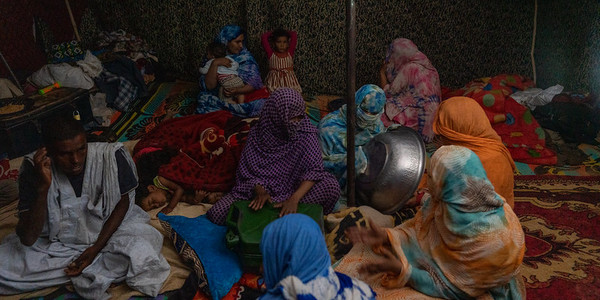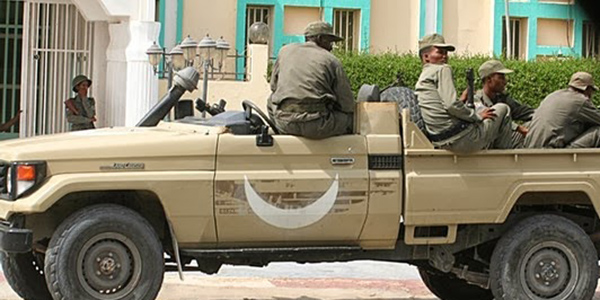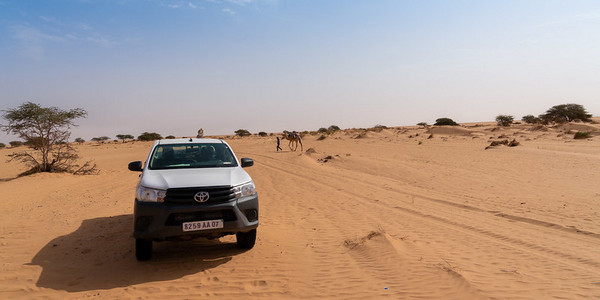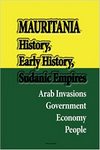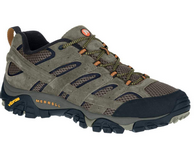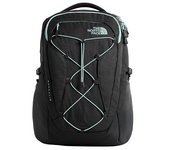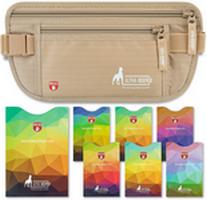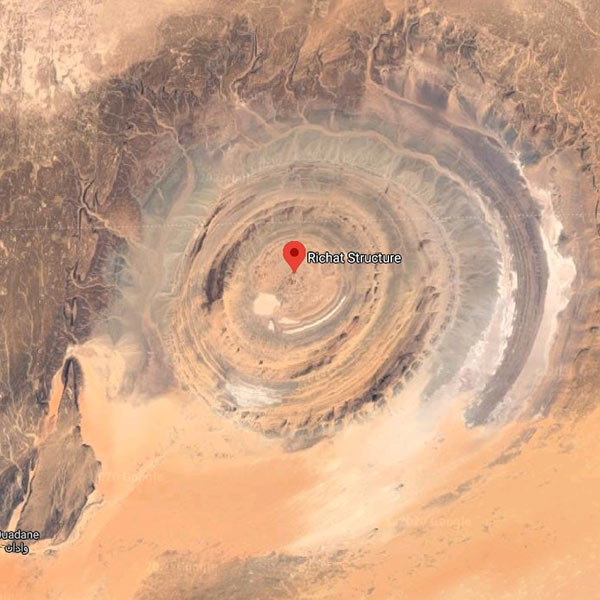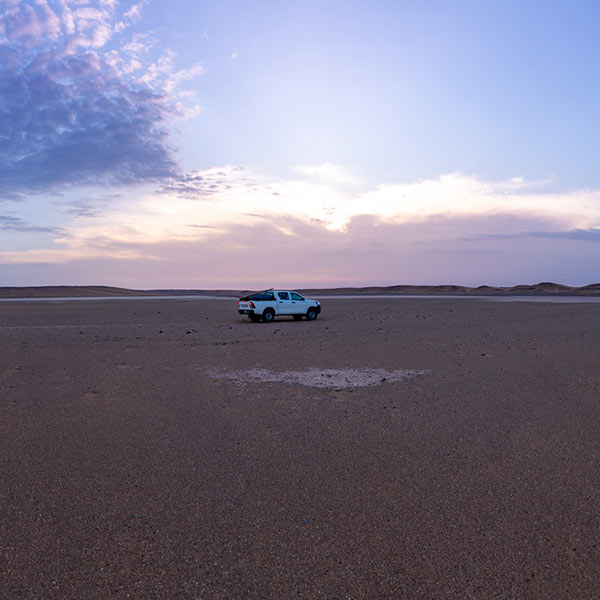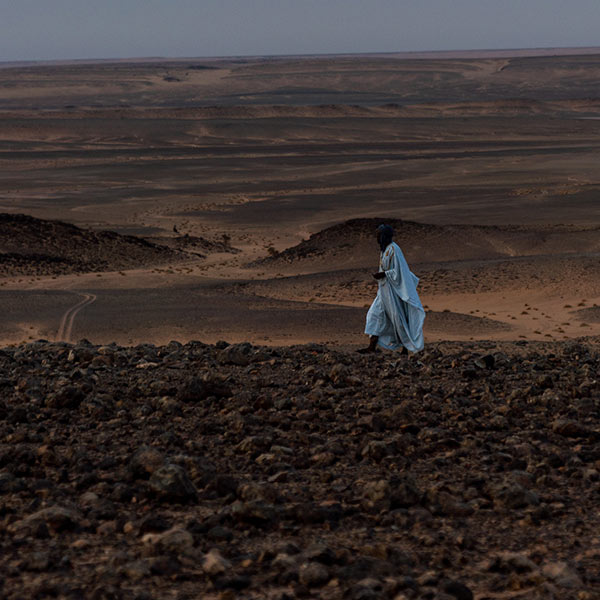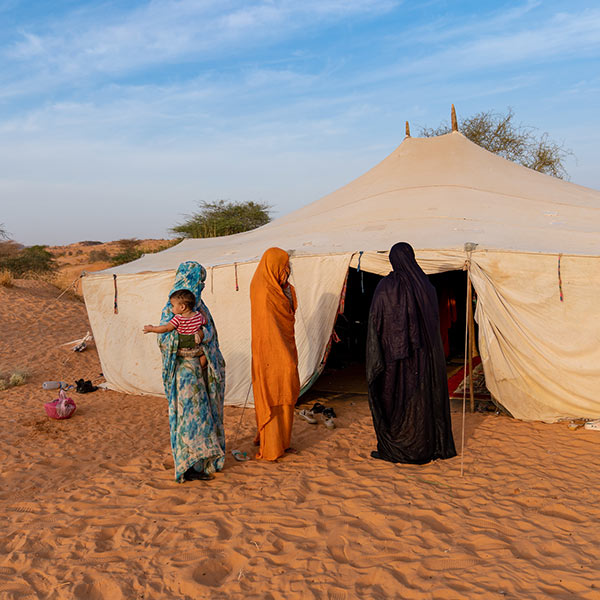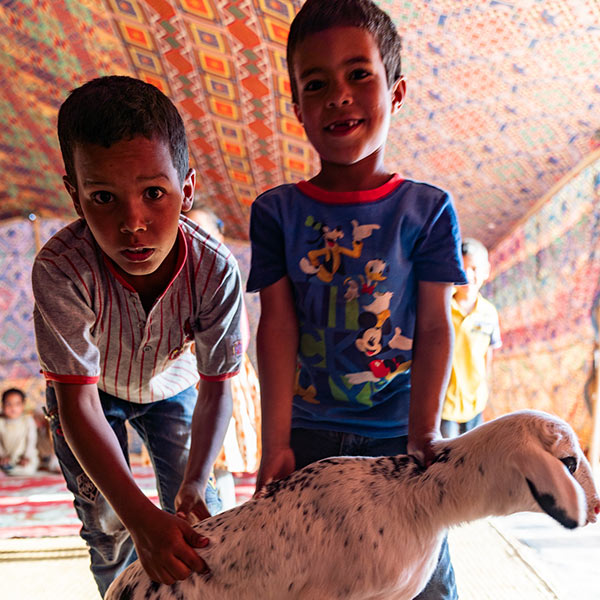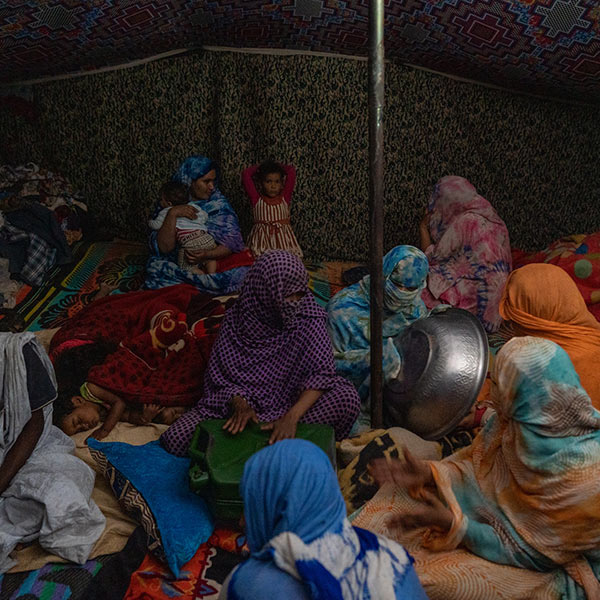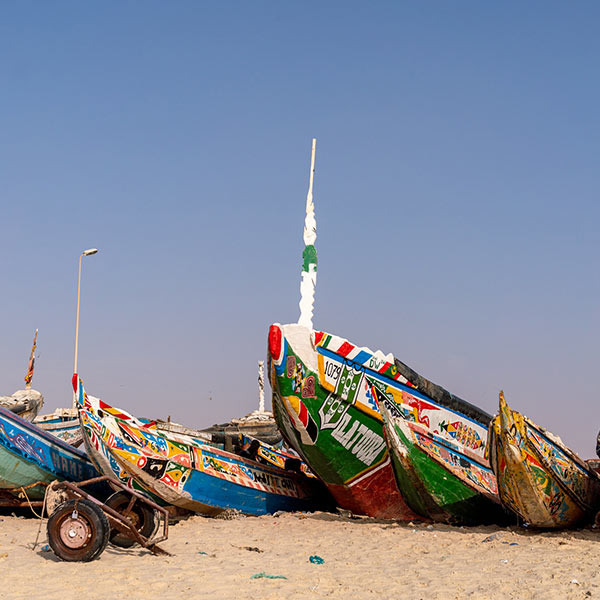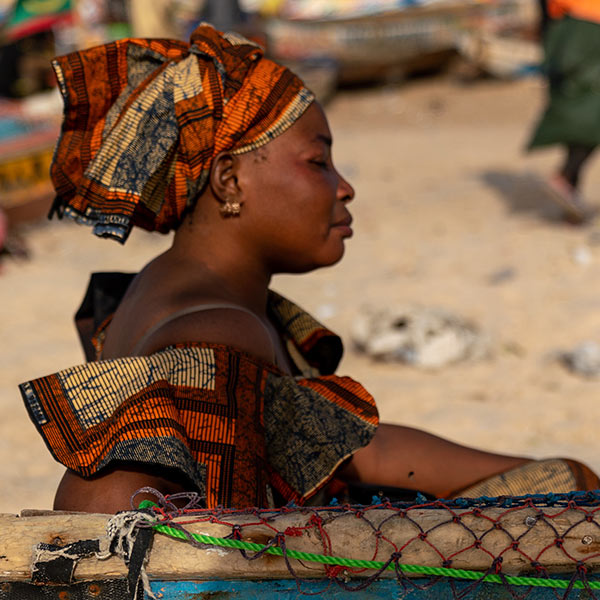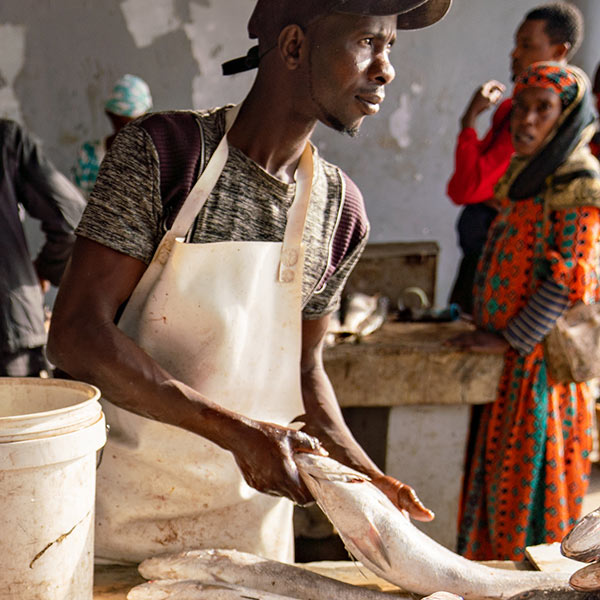Sidebar Menu
Mauritania
The unsparing embrace of the desert has, ironically, spared the Mauritanian culture of change. Very patriarchal and very traditional, some of its norms strike as troubling and moving at once. Slavery still exists here, and you might meet slaves by choice: as no other choice seems plausible. You will for sure meet nomads who openly detest cities!
But the heart of the Mauritanian culture is laid of openness and sharing, the keys to surviving one of Africa's most demanding landscapes. The rolling dunes of the Sahara traverse the entire country before meeting the Atlantic Ocean. Traveling in Mauritania will be shaped by vast distances and poor infrastructure, but no matter where you go, its fascinating culture will find you to make a long-lasting impression.
- Feel tiny in the valley of grand monoliths, at Ben Amera and Aisha Monolith.
- Catch the Iron Ore Train, a mile-long train, for a unique ride in the Sahara.
- Deep in the desert, find the Eye of Sahara – the Richat structure.
- Visit the UNESCO World Heritage caravan towns built of stone and mud: Chinguetti and Ouadane.
- Stop by the winter residence of millions of migratory birds at Banc d'Arguin National Park.
THE
SANDS OF
MAURITANIA
Perfect For

PHOTOGRAPHY

NATURE

HISTORY

CULTURE
Itinerary ideas
What to Expect
What to pack
In The Media
Best to combine with
Mauritania is on the border between the mystical riches of Africa's north and true, black Africa. From this unique country, you can enjoy the best of both worlds.
Morocco
One of Africa's most popular destination has it all: from historic towns to vibrant markets and World-class cuisine
Senegal
Mauritania's southern neighbor is one of continent's up and coming destinations offering everything from vibrant Dakar, African wildlife and Saint Denis of colonial charm.
Mali
Mysteries of Sahara revealed! From ancient rock paintings to secret knowledge of the Dogon tribe.
Quirks for the Curious
Vanishing Worlds
Vanishing Worlds
Connect With Us
© Copyright 2020 - 2025 Vanishing Worlds
